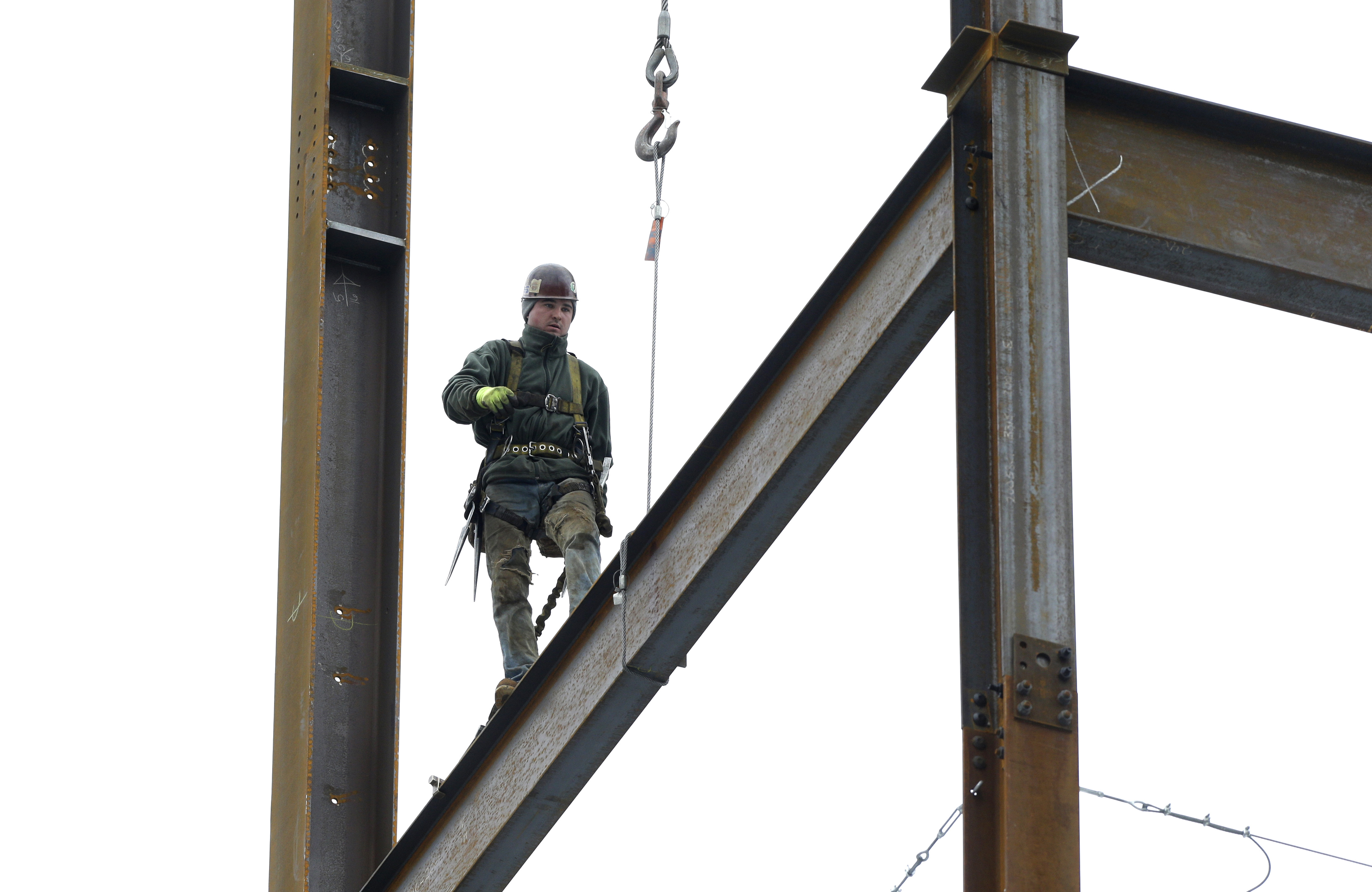U.S. economy shrank at steep 2.9 percent rate in first- quarter
Thursday, June 26, 2014
WASHINGTON - The U.S. economy shrank at a steep annual rate of 2.9 percent in the January-March quarter as a harsh winter contributed to the biggest contraction since the depths of the recession five years ago. But the setback is widely thought to be temporary, with growth rebounding solidly since spring.
The first-quarter contraction reported Wednesday by the government was even more severe than the 1 percent annual decline it had estimated a month ago. Much of the downward revision reflected an unexpectedly sharp drop in health care spending. Another factor was a bigger trade deficit than earlier estimated.
Though such a sharp economic decline would typically stoke fears of another recession, analysts see it as a short-lived result of winter storms that shut factories, disrupted shipping and kept Americans away from shopping malls and auto dealerships. Many expect growth to reach a robust annual rate of 3.5 percent or better this quarter.
"Despite the awful start to the year, the U.S. economy is nowhere close to a recession," said Sal Guatieri, senior economist at BMO Capital Markets.
Guatieri thinks growth is rebounding to a 3.8 percent annual rate in the current quarter and will average a solid 3 percent rate in the second half of the year.
Other analysts noted that several likely temporary factors slowed the economy last quarter - from businesses reducing their pace of restocking to companies paring their purchases of equipment. Also, a wider trade deficit cut 1.5 percentage points from growth. Housing construction slumped.
Those negative forces will likely turn positive this quarter, analysts said. The economy is getting a lift from an improving job market, which has added more than 200,000 jobs each month over the past four months.
"We had one-time hits from the weather, business inventories and trade in the first quarter," said Gus Faucher, senior economist at PNC Financial. "Things are looking much better for the rest of this year. Job gains are allowing households to increase their spending, with higher stock prices and home values also helping."
Stock investors appeared unfazed by the plunge in economic activity last quarter. The Dow Jones industrial average was up about 30 points in late-afternoon trading.
Last quarter's 2.9 percent annual decline, as measured by the gross domestic product, followed a 2.6 percent gain in the fourth quarter. It was the weakest showing since the economy shrank at a 5.4 percent annual rate in the first quarter of 2009 in the midst of the Great Recession.
Two-thirds of Wednesday's downward revision in overall activity reflected weaker spending on health care. Instead of growing at a 1 percent rate in the first quarter, health care spending actually fell at a 0.2 percent annual rate, the government estimated. It was the first quarterly drop in health care spending since 2011.
Analysts said the government was too optimistic about the boost the new health care law would give to spending in the first quarter. The harsh winter likely caused some people to delay elective surgeries and doctor visits. Analysts predicted that health care spending would rebound as people who have gained health insurance begin using their coverage.
Most analysts expect the economy to keep expanding at a healthy annual rate of around 3 percent in the second half of this year.
Reports on consumer spending, manufacturing and business investment have shown a solid rebound. Orders for big-ticket manufactured goods excluding military hardware and for core capital goods, a proxy for business investment, rose strongly in May, a report Wednesday showed.
Analysts say solid hiring, growth in manufacturing and surging auto sales are contributing to a stronger economy. A stumbling housing recovery has been a concern. But even there, recent data on home sales and construction have been encouraging.
"The larger contraction in GDP in the first quarter is not a sign that the US is suffering from a fundamental slowdown," said Paul Dales, senior U.S. economist at Capital Economics.
If economists are correct that annual growth will reach around 3 percent in the second half of the year, it would be a sharp improvement from the 2 percent annual pace of the first five years of this subpar economic recovery.
"We should have a much better second half this year and a much better 2015 than 2014," said Mark Zandi, chief economist at Moody's Analytics.
Zandi said he's forecasting growth of 3.5 percent to 4 percent in 2015. If he's correct, that would be the strongest year since the economy grew 3.8 percent in 2004.
"In past recoveries, we have always gotten a year of very strong growth," Zandi said. "I think we will get that in 2015," helped by a long-awaited improvement in wage growth.
Of course, the optimistic projections could prove too rosy. Analysts see risks to their forecasts, primarily the possibility that tensions in the Middle East could cause oil prices to surge given the deteriorating crisis in Iraq.
Surging energy prices have preceded earlier economic slowdowns, including the most recent recession.

